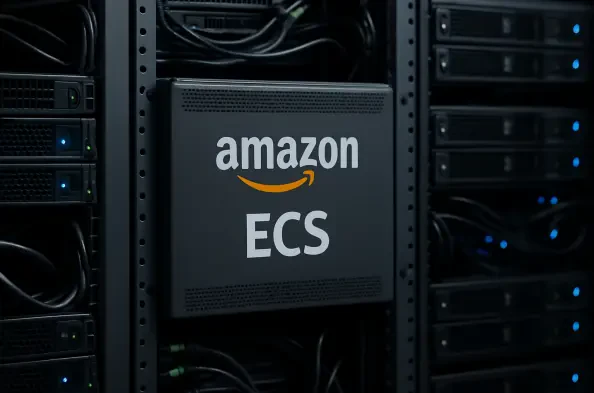Unveiling a Hidden Threat in Cloud Container Management
Imagine a scenario where a seemingly harmless container in a cloud environment becomes the gateway for attackers to seize control over an entire infrastructure, exposing sensitive data and compromising critical workloads. This alarming possibility has come to light with the discovery of a severe security flaw in Amazon Elastic Container Service (ECS), a cornerstone of modern cloud computing on AWS. As organizations increasingly rely on container orchestration for scalable and efficient application deployment, this vulnerability underscores the fragile balance between convenience and security in shared cloud environments.
The focus of this review is to dissect the intricacies of this flaw, dubbed ECScape, which enables privilege escalation and credential theft across ECS tasks. By examining the technical underpinnings, real-world implications, and mitigation strategies, this analysis aims to provide a comprehensive understanding of the risks posed and the steps needed to safeguard cloud deployments. With containerized workloads becoming ubiquitous, the stakes for securing platforms like ECS have never been higher.
In-Depth Analysis of Amazon ECS and the ECScape Vulnerability
Core Features and Role of ECS in Cloud Ecosystems
Amazon ECS stands as a fully managed container orchestration platform, empowering developers to deploy, manage, and scale containerized applications seamlessly within the AWS ecosystem. Its integration with various AWS services facilitates secure workload management, offering both flexibility and efficiency for businesses handling complex microservices architectures. This capability has positioned ECS as a vital tool for organizations aiming to optimize their cloud operations.
However, the reliance on shared EC2 instances for hosting multiple tasks introduces inherent security challenges. While ECS simplifies container management, the underlying architecture can blur the lines of isolation between tasks with differing privilege levels. This structural aspect becomes a critical point of concern when vulnerabilities like ECScape emerge, exposing the limitations of current security models in shared environments.
Technical Dissection of the ECScape Flaw
At the heart of the ECScape vulnerability lies a sophisticated privilege escalation chain that exploits an undocumented internal protocol within ECS. Attackers can leverage a low-privileged container to steal IAM credentials from higher-privileged tasks on the same EC2 instance by accessing the metadata service at a specific IP address. This breach collapses the trust model, allowing unauthorized access to sensitive permissions without immediate detection.
The attack sequence involves impersonating the ECS agent using host IAM role credentials, forging WebSocket requests through the Agent Communication Service, and harvesting credentials for all tasks on the instance. What makes this exploit particularly insidious is its stealthy execution, as malicious sessions mimic legitimate agent behavior by acknowledging messages and maintaining expected communication patterns. Such covert operations heighten the difficulty of identifying and thwarting the attack in real time.
Performance and Security Implications in Real-World Scenarios
The implications of ECScape extend far beyond theoretical risks, posing tangible threats to organizations using ECS for critical applications. In shared host scenarios, where tasks of varying privilege levels coexist, the vulnerability amplifies the attack surface, enabling lateral movement, data exposure, and potentially full control over cloud environments. Industries such as finance and healthcare, which depend on ECS for secure operations, face heightened risks of catastrophic breaches.
Beyond individual organizations, this flaw highlights systemic vulnerabilities in cloud platforms, as similar issues have been identified across other providers like Azure and Google Cloud. The interconnected nature of cloud services means that a single compromised task can ripple through an entire infrastructure, disrupting operations and eroding trust in container orchestration as a secure deployment method. Addressing these risks requires a reevaluation of how shared resources are managed and protected.
Broader Context and Mitigation Approaches
Rising Threats in Cloud Security Landscape
The discovery of ECScape is not an isolated incident but part of a broader wave of security challenges in cloud computing. Recent vulnerabilities in platforms such as Google Cloud Build and Azure Machine Learning reveal a pattern of privilege escalation and misconfiguration risks that plague modern cloud environments. These incidents collectively emphasize the urgent need for robust security frameworks as the adoption of cloud technologies accelerates.
As organizations migrate more workloads to the cloud, the complexity of securing diverse services increases exponentially. The shared responsibility model, where providers and users must collaborate on security, often leaves gaps that attackers exploit. This evolving threat landscape demands continuous vigilance and adaptation to emerging risks, ensuring that convenience does not come at the expense of protection.
Challenges and Protective Measures for ECS Users
One of the primary challenges with ECS security lies in achieving effective task isolation on EC2 instances, a limitation acknowledged by AWS. Shared host environments inherently risk credential exposure between tasks, a flaw that ECScape exploits with precision. This structural issue necessitates a shift in how tasks are deployed and managed to minimize potential vulnerabilities.
To counter these risks, AWS recommends several mitigation strategies, such as using AWS Fargate for true task isolation, restricting access to the instance metadata service, and setting up monitoring alerts through CloudTrail. Additionally, adhering to the principle of least privilege and treating every container as potentially compromisable can significantly reduce the blast radius of an attack. These measures, while effective, require proactive implementation by users to fortify their environments.
Final Thoughts and Path Forward
Reflecting on the analysis of Amazon ECS and the ECScape vulnerability, it becomes evident that while the platform offers powerful tools for container orchestration, its security posture faces significant challenges under shared hosting models. The detailed examination of the privilege escalation chain revealed critical weaknesses that attackers exploit with alarming ease, posing substantial risks to cloud-dependent organizations.
Looking ahead, the path forward demands a collaborative effort between AWS and its users to enhance security mechanisms, potentially through stricter isolation protocols and more transparent documentation. Organizations are encouraged to adopt recommended mitigations like Fargate and to prioritize regular security audits to identify and address vulnerabilities before exploitation occurs. By fostering a culture of proactive defense and embracing emerging trends like zero-trust architectures, the cloud computing community can strengthen its resilience against evolving threats.






